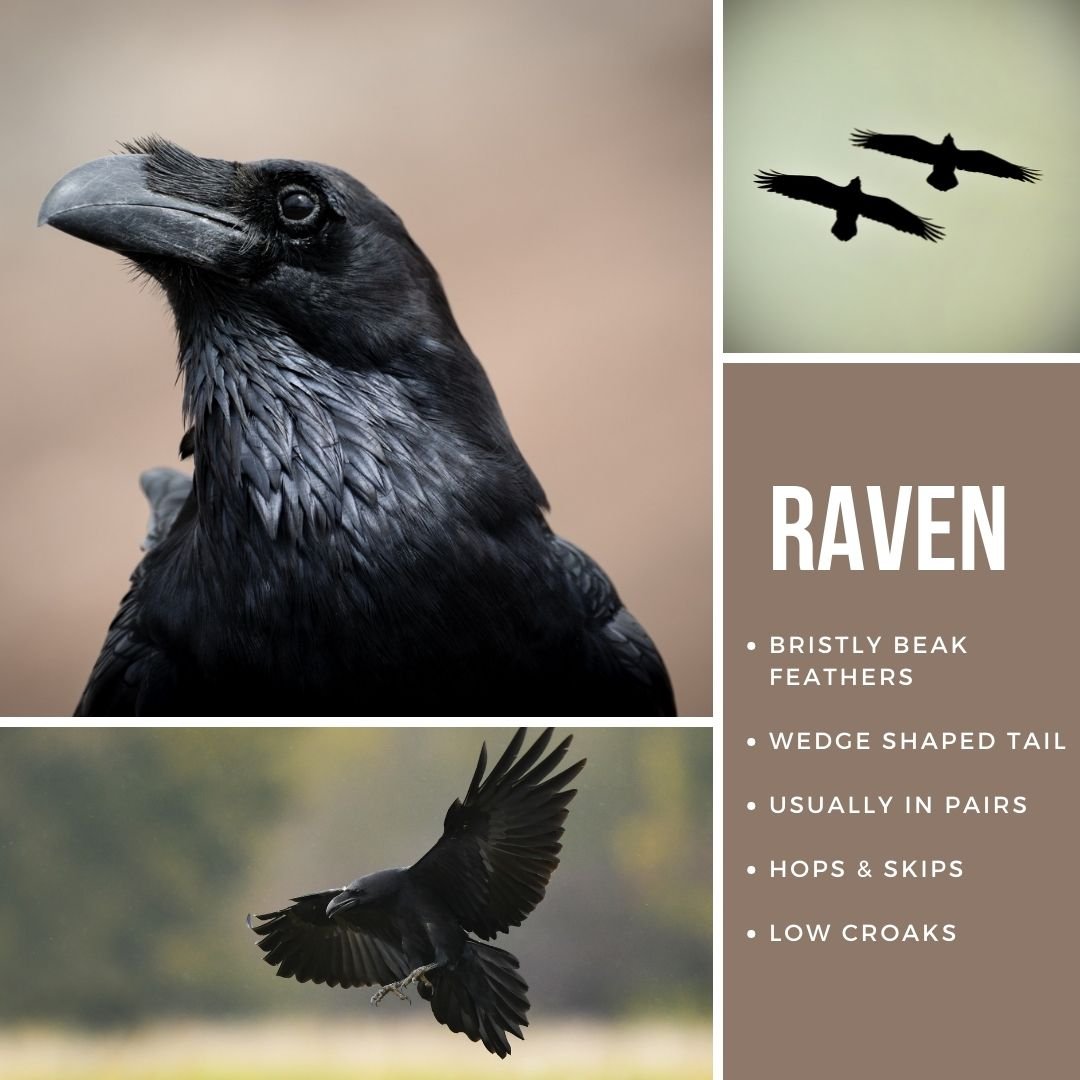Wild Child: Who's making that noise?
Have you notice all the birds suddenly singing out loudly in the mornings?
Maybe you’ve seen a big black bird flying around. Is it a crow or a raven? Or noticed a loud repeating call on clear mornings? or heard the familiar chickia-dee-dee-dee call?
In our area crows, cardinals, and chickadees have increased their calling and it can be fun to try an spot them or hear the call and notice the singer.
Is it a crow or a raven?
While both birds are black, there are some useful tips to tell the difference:
Ravens in general have:
Bristly beak feathers
Wedge shaped tail (the centre feather are longer)
Are usually spotted in pairs
Tend to hops and skip along the ground
Make low croaks
Crows are more common and tend to have:
Smoother beak feathers
Fan shaped tail (all the feathers are similar sized)
Usually are spotted in groups
Make a cawing and purring sound
For more on the differences between these fascinating birds and to heard their calls and watch videos are their distinctive movements head to this Audubon society page.
A male and a female cardinal face away from each other showing the differences in colouring.
Cardinals
Cardinals are easy to spot with their bright red feathers. But can you spot the more olive coloured female? Cardinals also have a distinctive set of calls. you can listen to them here, if you prefer watching a short video Project Bolony has a 2 min video of some of the common calls.
For more detailed information about cardinals and cool facts check out the information the Cornell Lab of Ornithology.
A chickadee sits on a sumac branch as an example of this type of bird.
Black-capped Chickadees
These little spunky birds are very familiar visitors to our Wild Child programs. These birds are great adaptors and have adjusted to people being near their habitat and are often the first to feed from an out-stretch hand with some sunflower seeds. Their familiar black cap, grey back and rosy white breast are easy to spot. Their call is easy to remmeber as it goes chickadee-dee-dee-dee which varying numbers of dees at the end. Less is their hey-sweetie call which you can here is late winter and early spring. They all have several other calls.
For more detailed information on black-capped chickadees click here.
Written by Tandy Morton Wild Child Outdoor Playgroup Facilitator




